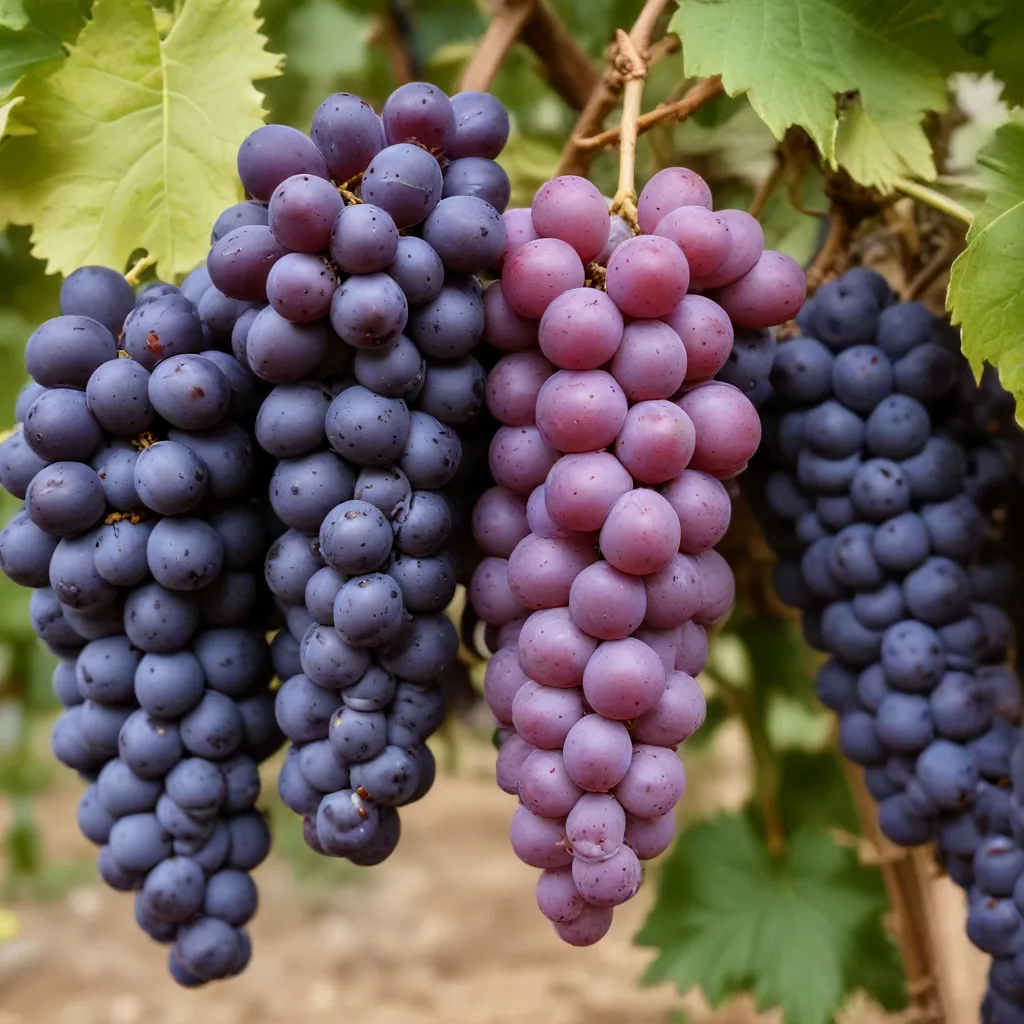
Uncovering the Phytochemical Powerhouse of Heirloom Grapes
As the vintner at Wine Garden Inn, I am perpetually in awe of the incredible diversity and complexity found within the world of wine grapes. While the ubiquitous Cabernet Sauvignons and Chardonnays of the world have certainly earned their place, it is the heirloom grape varieties that truly captivate me. These often-overlooked cultivars harbor a treasure trove of unique flavors, aromas, and—most importantly—a rich phytochemical profile that offers remarkable health benefits.
Grape Varieties and Diversity
Heirloom Grape Cultivars
Heirloom grapes encompass a vast array of varieties that have been grown for centuries, often passed down through generations of vintners and winemakers. These grapes are the living embodiment of the distinct terroirs and viticultural traditions of their regions of origin. From the robust and earthy Tannat of Southwest France to the floral and aromatic Muscat Blanc of Northern Italy, each heirloom grape cultivar tells a story of its ancestral homeland.
Grape Genetic Backgrounds
Unencumbered by the demands of large-scale commercial production, heirloom grapes have had the freedom to diversify and develop a wide range of genetic backgrounds. This means that in addition to the familiar Vitis vinifera species, we often find grapes with Vitis labrusca, Vitis aestivalis, or even Vitis rotundifolia parentage. This genetic diversity translates to a remarkable breadth of phytochemical profiles.
Grape Phenotypic Characteristics
Heirloom grapes also tend to exhibit a remarkable diversity in their physical characteristics. From the deep indigo-blue hues of the Concord grape to the vibrant pink-red tones of the Muscat Hamburg, the visual appeal of these grapes is undeniable. But it is their unique flavor and aroma profiles that truly set them apart, with notes ranging from delicate floral essences to robust, earthy undertones.
Phytochemical Composition of Heirloom Grapes
Polyphenol Content
One of the most striking features of heirloom grapes is their exceptional polyphenol content. These bioactive compounds, which include flavonoids, stilbenoids, and phenolic acids, are responsible for the vivid colors and complex flavors of these grapes. Intriguingly, research has shown that heirloom grape varieties often contain significantly higher concentrations of polyphenols compared to their more commercially grown counterparts.
Antioxidant Capacity
The abundance of polyphenols in heirloom grapes translates to a remarkable antioxidant capacity. These potent phytochemicals are able to neutralize harmful free radicals, reducing oxidative stress and inflammation within the body. Numerous studies have linked the regular consumption of heirloom grape products, such as wine and juice, to a reduced risk of chronic diseases like heart disease, cancer, and neurodegenerative disorders.
Flavor and Aroma Compounds
Beyond their impressive phytochemical profiles, heirloom grapes also boast an unparalleled depth of flavor and aroma. Their genetic diversity gives rise to a vast array of volatile organic compounds, including terpenes, esters, and aldehydes, that contribute to their distinctive sensory characteristics. This allows vintners like myself to craft truly unique and captivating wines that transport the drinker to the very terroirs from which the grapes were grown.
Nutritional Profile of Heirloom Grapes
Macronutrient Content
Heirloom grapes not only excel in their phytochemical composition but also offer a well-balanced nutritional profile. These grapes are naturally low in calories yet provide a significant amount of carbohydrates, primarily in the form of readily available sugars. They also contain a modest amount of protein and negligible fat, making them an excellent choice for health-conscious consumers.
Micronutrient Abundance
In addition to their carbohydrate content, heirloom grapes are rich in a variety of essential micronutrients. They are an excellent source of vitamins C and K, as well as a range of B vitamins. Heirloom grapes also contain important minerals such as potassium, magnesium, and manganese, all of which play crucial roles in maintaining overall health and well-being.
Fiber and Prebiotic Potential
The fiber content of heirloom grapes is also noteworthy, particularly in the skin and seeds. This fiber, combined with the grapes’ prebiotic potential, can contribute to a healthy gut microbiome and improved digestion. As we continue to uncover the vital importance of gut health, the unique nutritional profile of heirloom grapes makes them a valuable addition to any balanced diet.
Bioactive Compounds in Heirloom Grapes
Resveratrol and Stilbenoids
One of the most well-known bioactive compounds found in heirloom grapes is resveratrol, a stilbenoid with numerous health benefits. Resveratrol has been shown to possess potent antioxidant, anti-inflammatory, and cardioprotective properties, making it a subject of intense research in the fields of longevity and disease prevention.
Flavonoids and Anthocyanins
Heirloom grapes are also rich in a diverse array of flavonoids, including anthocyanins, which are responsible for the vivid colors of many grape varieties. These compounds have been linked to a reduced risk of cognitive decline, improved cardiovascular function, and even cancer-preventive effects.
Terpenes and Volatile Organics
In addition to their polyphenol content, heirloom grapes are known for their unique terpene and volatile organic profiles. These compounds not only contribute to the grapes’ distinctive aromas and flavors but also possess various health-promoting properties, such as anti-inflammatory, antimicrobial, and neuroprotective effects.
As a vintner at Wine Garden Inn, I am truly captivated by the extraordinary phytochemical richness of heirloom grapes. These living time capsules not only offer a sensory experience like no other but also provide a treasure trove of health-promoting compounds that can benefit the well-being of our guests. By championing the use of heirloom grape varieties in our winemaking and culinary offerings, we aim to showcase the incredible diversity and nuance that can be found in the world of viticulture. I invite you to join us on this journey of discovery and uncover the hidden delights of the heirloom grape.
